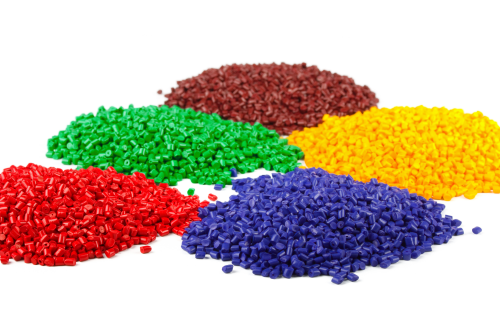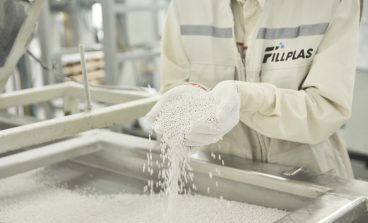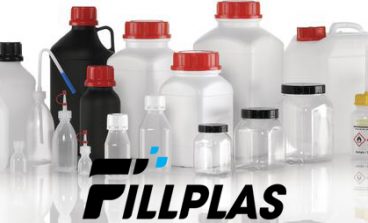
Plastic material is very popular in the packaging industry. Here’s a look at some plastic resin types and some of the ways they are commonly used in packaging applications.
High-Density Polyethylene (HDPE) resin
HDPE is the most widely used type of plastic. They use this to make many types of bottles and containers. Unpigmented bottles are translucent, have good barrier properties and stiffness, and are well suited to packaging products with a short shelf life such as milk. Because HDPE has good chemical resistance, it is used for packaging many household and industrial chemicals such as detergents and bleach. Pigmented HDPE bottles have better stress crack resistance than unpigmented HDPE.
Properties of HDPE are as below:
- Excellent resistance to most solvents.
- Higher tensile strength compared to other forms of polyethylene.
- Relatively stiff material with useful temperature capabilities.
HDPE has the following common packaging applications:
- Bottles for milk, water, juice, cosmetics, shampoo, dish and laundry detergents, and household cleaners.
- Bags for groceries and retail purchases.
- Cereal box liners.
Low-Density Polyethylene (LDPE) resin
It includes Linear Low-Density Polyethylene (LLDPE).
LDPE is used predominately in film applications due to its toughness, flexibility, and relative transparency, making it popular for use in applications where heat sealing is necessary. Producers also use LDPE to manufacture some flexible lids and bottles as well as in wire and cable applications.
This resin has some properties:
- Excellent resistance to acids, bases, and vegetable oils.
- Toughness, flexibility, and relative transparency; good combination of properties for packaging applications requiring heat-sealing.
Here are common packaging applications:
- Bags for dry cleaning, newspapers, bread, frozen foods, fresh produce, and household garbage.
- Shrinkwrap and stretch film.
- Coatings for paper milk cartons and hot and cold beverage cups.
- Container lids.
- Squeezable bottles (e.g., honey and mustard).
Polypropylene (PP) resin
PP has good chemical resistance, is strong, and has a high melting point making it good for hot-fill liquids. This resin is found in flexible and rigid packaging, fibers, and large molded parts for automotive and consumer products.
PP properties are listed as following:
- Excellent optical clarity in biaxially oriented films and stretch blow-molded containers.
- Low moisture vapor transmission.
- Inertness toward acids, alkalis, and most solvents.
Common packaging applications are:
- Containers for yogurt, margarine, takeout meals, and deli foods.
- Medicine bottles.
- Bottle caps and closures.
- Bottles for catsup and syrup.
Polystyrene (PS) resin
PS is a versatile plastic that can be rigid or foamed. General-purpose polystyrene is clear, hard, and brittle. It has a relatively low melting point. Typical applications include protective packaging, foodservice packaging, bottles, and food containers. They often combine PS with rubber to make high impact polystyrene (HIPS) (HIPS for packaging and durable applications requiring toughness, but not clarity).
PS has the following properties:
- Excellent moisture barrier for short shelf-life products.
- Excellent optical clarity in general-purpose form.
- Significant stiffness in both foamed and rigid forms.
- Low density and high stiffness in foamed applications.
- Low thermal conductivity and excellent insulation properties in the foamed form
Common packing applications are as follow:
- Foodservice items, such as cups, plates, bowls, cutlery, hinged takeout containers (clamshells), meat and poultry trays, and rigid food containers (e.g., yogurt).
Polyethylene Terephthalate (PET, PETE) resin
PET is clear, tough, and has good gas and moisture barrier properties. They use this resin in beverage bottles and many injections- molded consumer product containers. Cleaned, recycled PET flakes and pellets are in great demand for spinning fiber for carpet yarns and producing fiberfill and geotextiles.
PET properties are:
- Clear and optically smooth surfaces for oriented films and bottles.
- Excellent barrier to oxygen, water, and carbon dioxide.
- High impact capability and shatter resistance.
- Excellent resistance to most solvents.
- Capability.
Common packaging applications of PE resin are:
- Plastic bottles for soft drinks, water, juice, sports drinks, beer, mouthwash, catsup, and salad dressing.
- Food jars for peanut butter, jelly, jam, and pickles.
- Ovenable film and microwavable food trays.
Polyvinyl Chloride (PVC, Vinyl) resin
In addition to its stable physical properties, PVC has good chemical resistance, weather ability, flow characteristics, and stable electrical properties. The diverse slate of vinyl products can be broadly divided into rigid and flexible materials.
PVC properties are:
- High impact strength.
- Brilliant clarity.
- Excellent processing performance.
- Resistance to grease, oil, and chemicals.
Here are common packaging applications:
- Rigid packaging applications: Blister packs and clamshells.
- Flexible packaging uses: Bags for bedding and medical, shrink wrap, deli and meat wrap, and tamper resistance.
Fillplas uses different resin types to produce products of filler masterbatch. Please visit our website to have more information.



